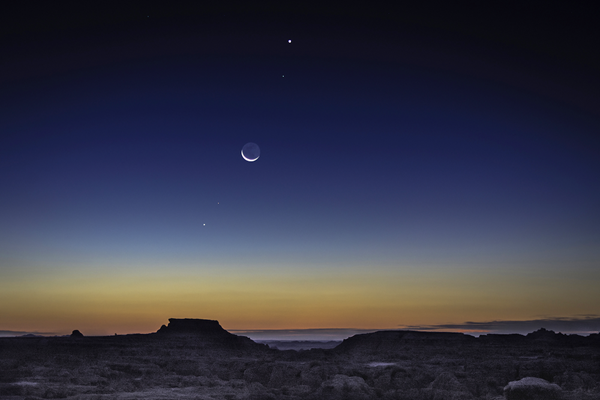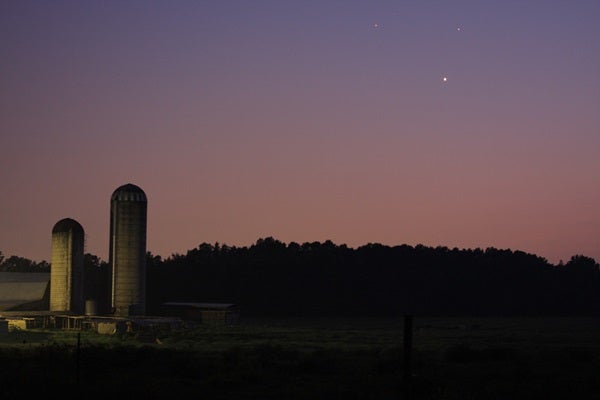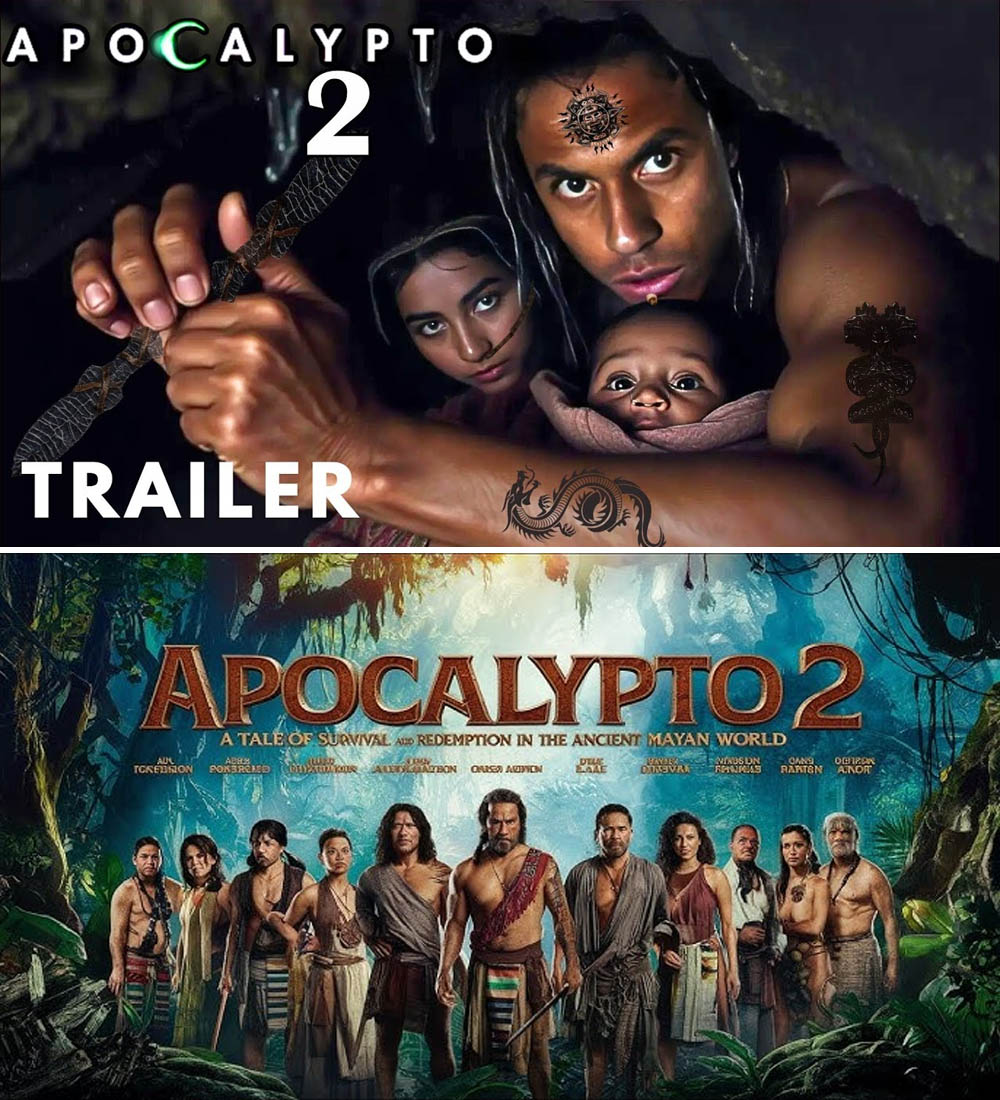
Venus, the star Regulus, the Moon, Mars, and Mercury seen over the Badlands in South Dakota on Sept. 18, 2017. Credit: Gregg Alliss.
When we look up at the night sky, the dance of the planets is a constant, mesmerizing ballet. And occasionally, this dance creates patterns that spark both wonder and curiosity, as is the case when the planets align.
For centuries, the sight of multiple planets appearing close together in the night sky has fueled myths, legends, and prophecies. But what does it truly mean, astronomically speaking, when the planets align? And when can we expect to see the planets align next?
What does “planetary alignment” mean?
First, let’s clear up a common misconception. When we talk about “planetary alignment,” we’re not suggesting that the planets line up in a perfect straight line in space. Rather, we are usually referring to a celestial event wherein multiple planets appear close together in the sky from our perspective on Earth. This phenomenon is known as a “conjunction.”
The alignments we see from Earth are based on our line of sight. For instance, even if Mars and Venus appear close in the sky, they might still be separated by millions of miles in space. It’s like standing on a hill and seeing two distant trees appear close together, even if they’re far apart on the landscape.
Why do planetary alignments happen?
The planets orbit the Sun at different speeds and distances. This means they’re frequently moving relative to each other in our night sky. Occasionally, their paths will seem to cross, leading to an alignment, or conjunction.
For example, Jupiter takes about 12 years to orbit the Sun, while Mars takes about two years. This difference in orbital periods means that every so often, Mars and Jupiter are positioned in a way that they appear right next to each other in our sky, creating a temporary alignment.
However, because the solar system’s planets don’t all perfectly orbit the Sun in the same plane, it’s relatively rare for more than two planets to align at once – although it does happen.
What do planetary alignments mean for astronomers?
Venus, Mars, and Saturn shine during a close approach on Aug. 7, 2010. Credit: Kyle H. Wilkins.
Planetary conjunctions aren’t just beautiful events for stargazers. They have practical implications too. For instance, conjunctions can serve as key reference points for calibrating astronomical instruments.
And when planets do truly align in 3D space, exploration missions, particularly those that involve flybys or gravitational assists, might also leverage their positions.
For example, NASA’s Voyager 2 mission took advantage of a rare planetary alignment of the four outer planets during the late 1970s and 1980s. Such an alignment, which only occurs about every 175 years, allowed the mission to fuel-efficiently explore the outer reaches of the solar system.
When will the planets align again?
Although conjunctions between two planets are relatively common, given the different orbital periods of each planet, full alignments (where many planets all seem close together at once) are rather rare.
In the near future, on Jan. 27, 2024, Mars, Venus, and Mercury will all align in the morning sky. But one of the most awaited alignments will occur in the 2040s. This event will showcase Mercury, Venus, Mars, Jupiter, and Saturn, which will all be visible within a small segment of the sky next to a thin crescent Moon.
The historical impact of planetary alignments
Historically, planetary alignments have held immense significance for a variety of civilizations. Ancient cultures often associated these celestial events with prophecies, omens, or significant earthly occurrences. While today we understand the scientific reasons behind these alignments, looking back provides a fascinating perspective on human culture and our intrinsic connection with the cosmos.
The Mayans, for instance, were keen astronomers. They meticulously tracked the movements of the planets, and their calendar system intricately interwove planetary cycles. Eclipses and alignments were deemed powerful enough to influence terrestrial events, warranting careful observation and record-keeping.
Similarly, the Babylonians, known for their detailed astronomical diaries, documented conjunctions. These records provide modern scientists with a treasure trove of historical astronomical data, including a cuneiform description of a “massing of planets” in BC 185. On March 25 of that year, Mercury, Venus, Mars, Jupiter, and Saturn all shared a small portion of the sky.
In Renaissance Europe, meanwhile the appearance of multiple planets in the night sky was often seen through a dual lens: scientific curiosity and divine interpretation. Great minds like Tycho Brahe and Johannes Kepler observed and studied these phenomena, meticulously tracking the planets’ positions to help better understand their motion.
By recognizing our ancestral fascination with the cosmos, we not only gain insight into our past, but also foster a deeper appreciation for the astronomical events that continue to captivate us.
Planetary alignments and conjunctions serve as beautiful reminders of the dynamic and ever-evolving nature of our solar system. They bridge the gap between ancient observers, who gazed upward in wonder, and today’s technologically-empowered astronomers, who seek to gain a glimpse into the mysteries of the universe.





